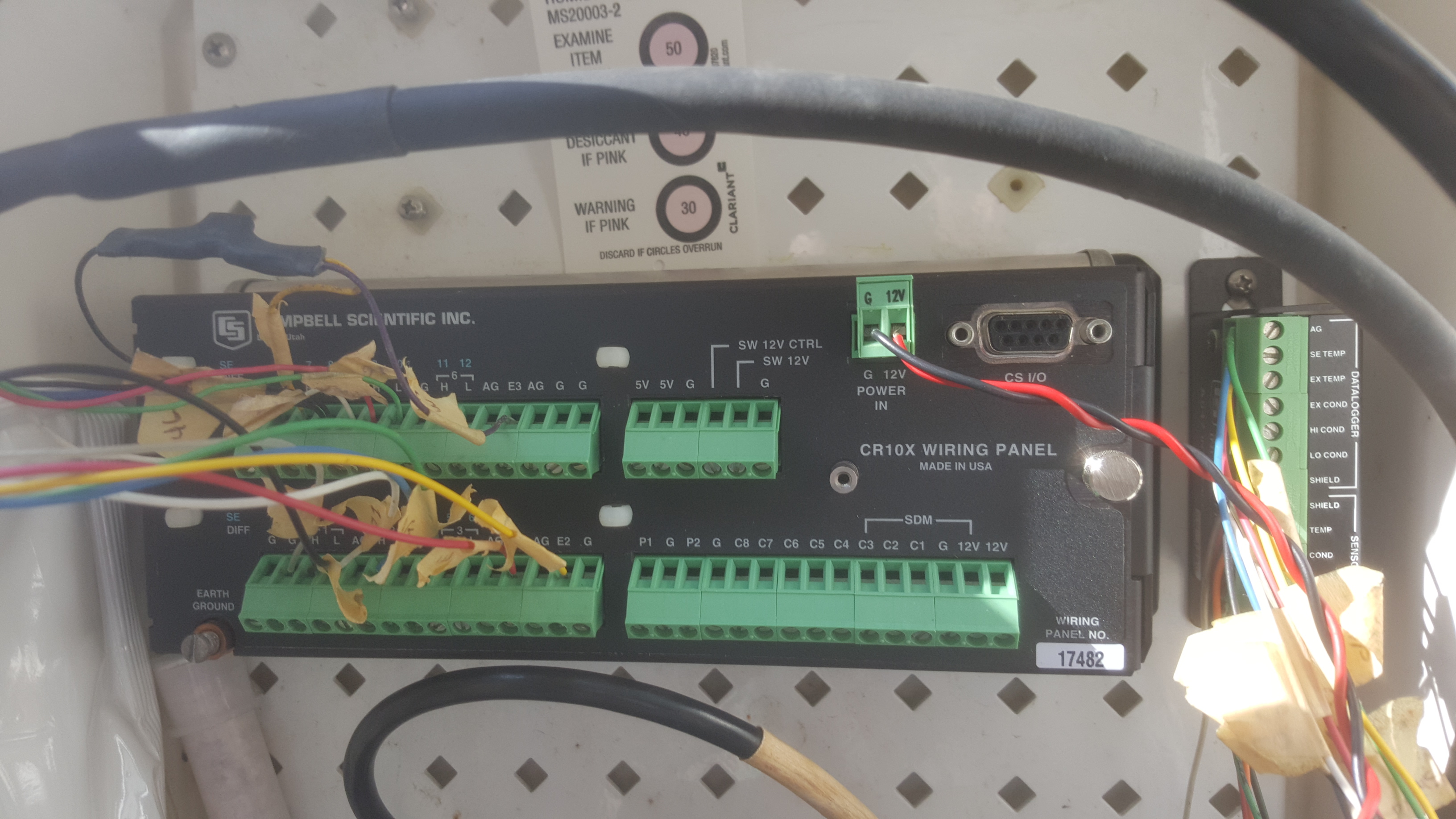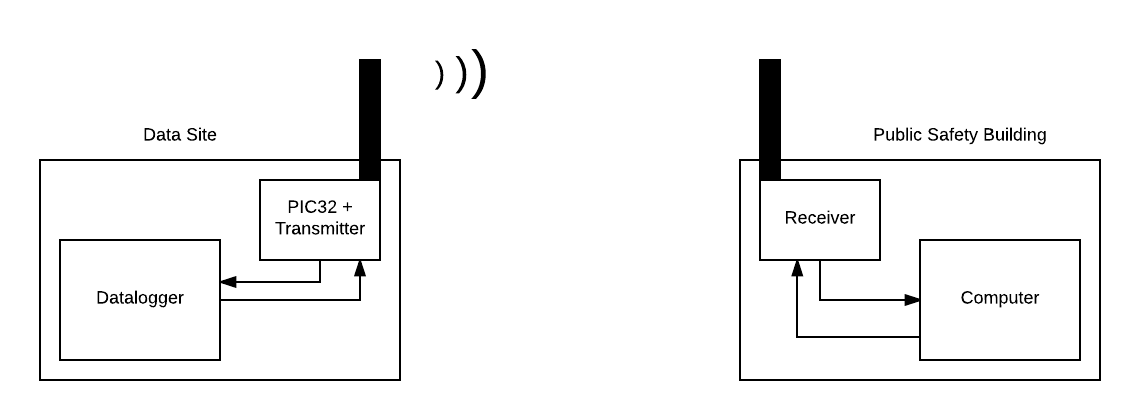Problem:
Professor Brandes, a Civil Engineering professor at Lafayette College, has a Campbells scientific CR10X data logger set up down at Bushkill Creek to record various qualities such as temperature and water level of the creek. The way his data logger is currently set up requires him to drive down to the data site with his computer and connect it to the data logger to retrieve the data. This is very time consuming and also means that new data can only be analyzed every time he goes to retrieve. Our embedded system aims to cut the need to physically retrieve the data in order to save him time and allow data to be accessible on a more regular interval.

Campbells Scientific CR10X data logger at the data site
Existing Solutions:
When first looking into a solution for the project, Professor Brandes got a quote from Campbells scientific for a self sustaining system that would allow him to send the data to his office in the Acopian Engineering Center. They fitted his current CR10X data logger with several upgrades such as a cellular modem and a solar panel. The entire system would cost hm over $1500, and he would have to pay upkeep for the cellular modem to a cellular company such as AT&T or Verizon. Professor Brandes then takes the ECE 414 fall 2017 class with coming up with a more creative solution to his problem.
The University of Iowa used a very similar technique to monitor flooding by tracking the height of several rivers throughout the state using ultrasonic sensors. Each sensor is equipped with a solar panel and a cellular modem. The cellular modem on each sensor module requires paid upkeep which is covered by the university, and the solar panel ensures the modules are sustainable. With the cellular modems, the sensor data is sent and stored in a database. The end result is similar to what Professor Brandes wants to achieve. With a solar panel powering the CR10X, he would not need to change the lead acid battery when it dies. Also, with a radio module securing and sending the data, no one would need to manually retrieve the data
Top Level Diagram:

Our Solution (And Logical Structure):
The structure of our solution is concise and simple. We have a PIC32 micro controller which will be programmed with software to retrieve data from the data logger once every hour. The real time clock in the PIC32 will wake the micro controller out of sleep mode once an hour, and then retrieve the data from the logger and then send it to the radio module to be transmitted. The radio module utilized by the PIC32 is the Adafruit Feather LoRa radio module which will send the data at 915Mhz. Attached to the radio transmitter is a more powerful antenna to amplify the signal and increase its range. This will all occur at the data site.
Down the street less about a quarter mile away from the data site is the public safety building. There will be another Adafruit Feather LoRa radio module with an attached antenna being used as a receiver to receive the data transmitted from the data site. This radio module will be connected to a computer with a continuously running Processing script that captures the data being received and writes it to a CSV file. Professor Brandes has supplied us with a Netbook laptop that is currently unused that will be connected to our radio receiver. He assures us that he will find a place in the building for us to keep the receiver continuously running. The CSV file will be on a shared network drive that Professor Brandes can copy and access from his office in Acopian.
Existing Patents:
EP 1072904 A3. Environmental data logging and transmission system
This patent is similar to what we are doing. It describes of a field unit that transmits various parameters taken by environmental sensors and transmits it to a base station that logs the data. The part that differs is that the base station can also send a warning if the parameters received are at a certain level. The transmission also differs between our solution and the one described in the patent. Our solution uses LoRa radio but it seems the patent is describing data transmitted through text messages, e-mail, or WAP data. This leads us to believe that we are not infringing on this patent. Also, this patent was filed in Europe which also limits the effects it has on our design.
